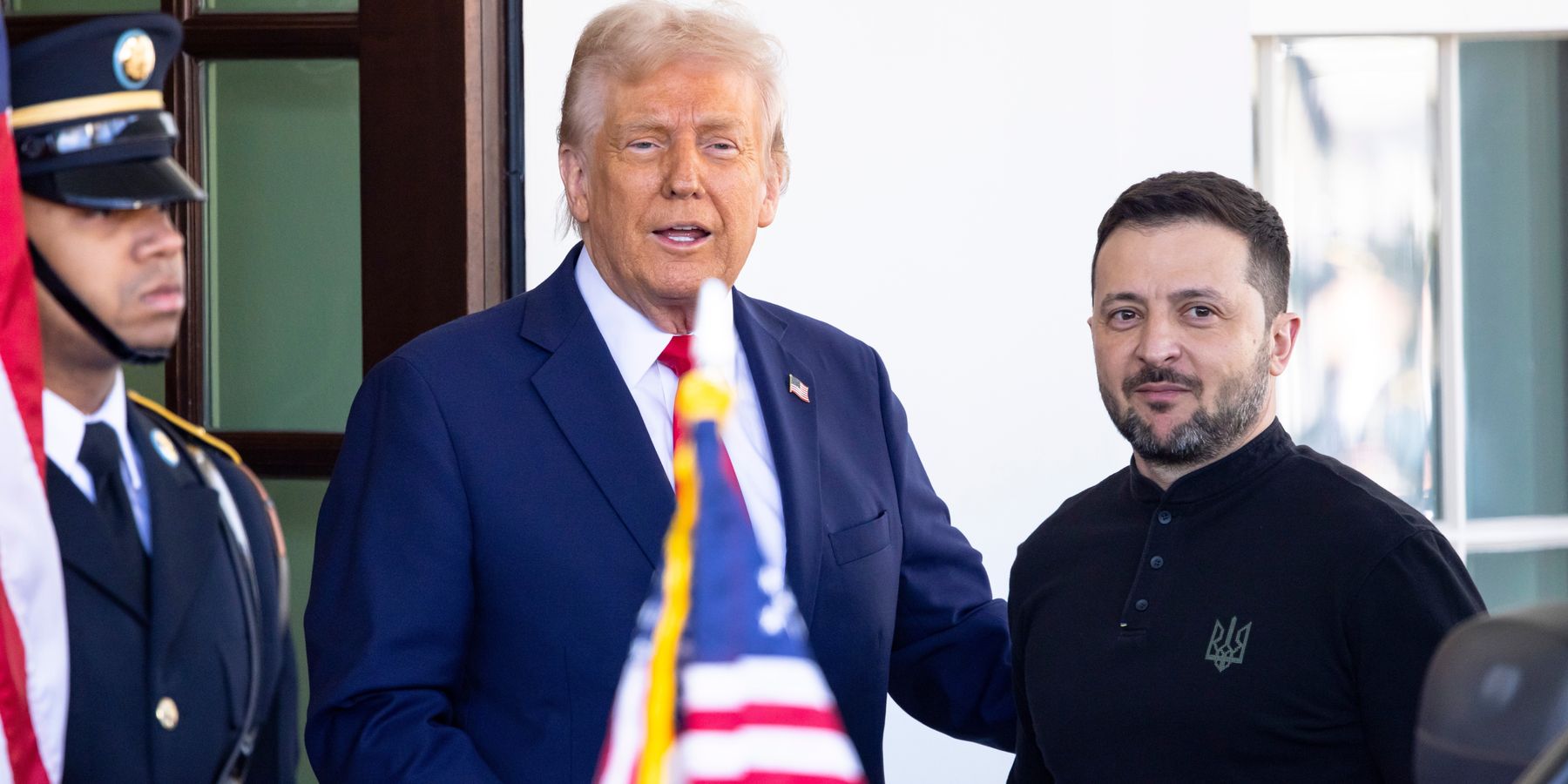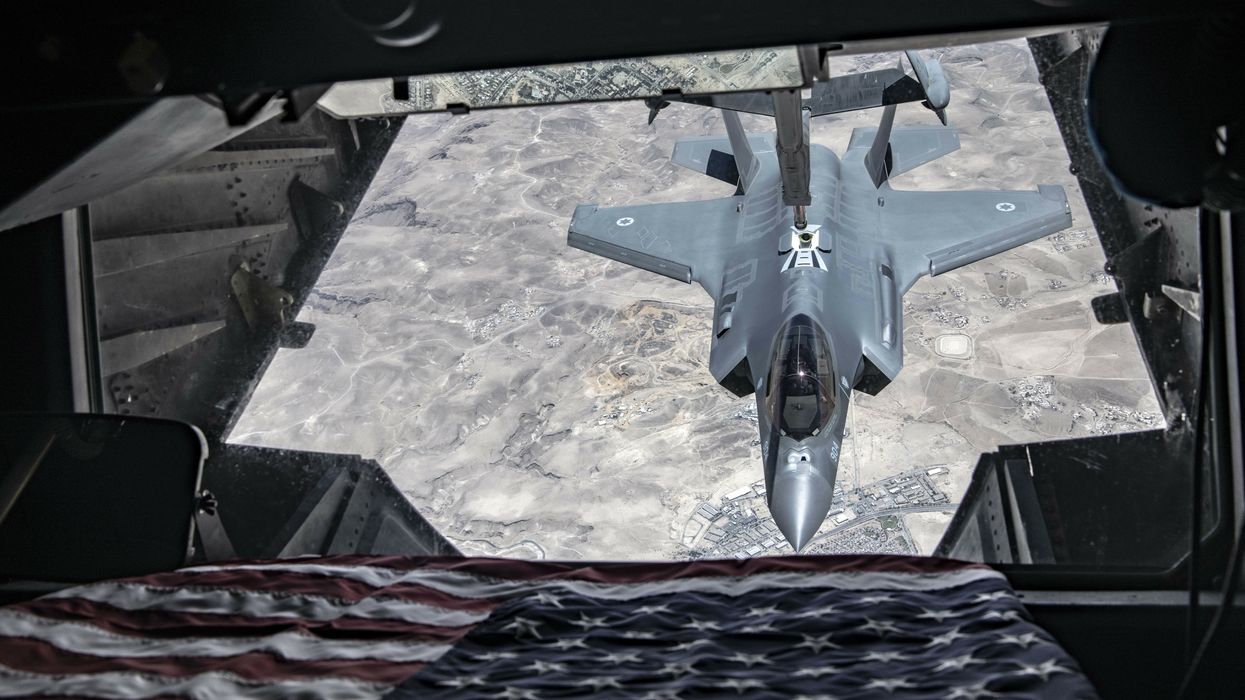Donald Trump’s recent outburst against Vladimir Putin — accusing the Russian leader of "throwing a pile of bullsh*t at us" and threatening devastating new sanctions — might be just another Trumpian tantrum.
The president is known for abrupt reversals. Or it could be a bargaining tactic ahead of potential Ukraine peace talks. But there’s a third, more troubling possibility: establishment Republican hawks and neoconservatives, who have been maneuvering to hijack Trump’s “America First” agenda since his return to office, may be exploiting his frustration with Putin to push for a prolonged confrontation with Russia.
Trump’s irritation is understandable. Ukraine has accepted his proposed ceasefire, but Putin has refused, making him, in Trump’s eyes, the main obstacle to ending the war.
Putin’s calculus is clear. As Ted Snider notes in the American Conservative, Russia is winning on the battlefield. In June, it captured more Ukrainian territory and now threatens critical Kyiv’s supply lines. Moscow also seized a key lithium deposit critical to securing Trump’s support for Ukraine. Meanwhile, Russian missile and drone strikes have intensified.
Putin seems convinced his key demands — Ukraine’s neutrality, territorial concessions in the Donbas and Crimea, and a downsized Ukrainian military — are more achievable through war than diplomacy.
Yet his strategy empowers the transatlantic “forever war” faction: leaders in Britain, France, Germany, and the EU, along with hawks in both main U.S. parties. German Chancellor Friedrich Merz claims that diplomacy with Russia is “exhausted.” Europe’s war party, convinced a Russian victory would inevitably lead to an attack on NATO (a suicidal prospect for Moscow), is willing to fight “to the last Ukrainian.” Meanwhile, U.S. hawks, including liberal interventionist Democrats, stoke Trump’s ego, framing failure to stand up to Putin’s defiance as a sign of weakness or appeasement.
Trump long resisted this pressure. Pragmatism told him Ukraine couldn’t win, and calling it “Biden’s war” was his way of distancing himself, seeking a quick exit to refocus on China, which he has depicted as Washington’s greater foreign threat. At least as important, U.S. involvement in the war in Ukraine has been unpopular with his MAGA base.
But his June strikes on Iran may signal a hawkish shift. By touting them as a decisive blow to Iran’s nuclear program (despite Tehran’s refusal so far to abandon uranium enrichment), Trump may be embracing a new approach to dealing with recalcitrant foreign powers: offer a deal, set a deadline, then unleash overwhelming force if rejected. The optics of “success” could tempt him to try something similar with Russia.
This pivot coincides with a media campaign against restraint advocates within the administration like Elbridge Colby, the Pentagon policy chief who has prioritized China over Ukraine and also provoked the opposition of pro-Israel neoconservatives by warning against war with Iran. POLITICO quoted unnamed officials attacking Colby for wanting the U.S. to “do less in the world.” Meanwhile, the conventional Republican hawk Marco Rubio’s influence grows as he combines the jobs of both secretary of state and national security adviser.
What Can Trump Actually Do to Russia?
Nuclear deterrence rules out direct military action — even Biden, far more invested in Ukraine than Trump, avoided that risk. Instead, Trump ally Sen.Lindsey Graham (R-S.C.), another establishment Republican hawk, is pushing a 500% tariff on nations buying Russian hydrocarbons, aiming to sever Moscow from the global economy. Trump seems supportive, although the move’s feasibility and impact are doubtful.
China and India are key buyers of Russian oil. China alone imports 12.5 million barrels daily. Russia exports seven million barrels daily. China could absorb Russia’s entire output. Beijing has bluntly stated it “cannot afford” a Russian defeat, ensuring Moscow’s economic lifeline remains open.
The U.S., meanwhile, is ill-prepared for a tariff war with China. When Trump imposed 145% tariffs, Beijing retaliated by cutting off rare earth metals exports, vital to U.S. industry and defense. Trump backed down.
At the G-7 summit in Canada last month, the EU proposed lowering price caps on Russian oil from $60 a barrel to $45 a barrel as part of its 18th sanctions package against Russia. Trump rejected the proposal at the time but may be tempted to reconsider, given his suggestion that more sanctions may be needed. Even if Washington backs the measure now, however, it is unlikely to cripple Russia’s war machine.
Another strategy may involve isolating Russia by peeling away Moscow’s traditionally friendly neighbors. Here, Western mediation between Armenia and Azerbaijan isn’t about peace — if it were, pressure would target Baku, which has stalled agreements and threatened renewed war against Armenia. The real goal is to eject Russia from the South Caucasus and create a NATO-aligned energy corridor linking Turkey to Central Asia, bypassing both Russia and Iran to their detriment.
Central Asia itself is itself emerging as a new battleground. In May 2025, the EU has celebrated its first summit with Central Asian nations in Uzbekistan, with a heavy focus on developing the Middle Corridor, a route for transportation of energy and critical raw materials that would bypass Russia. In that context, the EU has committed €10 billion in support of the Trans-Caspian International Transport Route.
Though Central Asian nations seek to reduce their dependence on Moscow, Russia, however, retains leverage through security ties, energy routes, and migrant remittances. China, the region’s other major partner, would view Western overtures with suspicion.
Hawks may ultimately pin their hopes on destabilizing Russia internally. Ethnic fractures are a key pressure point: non-Russian minorities, such as Dagestanis, Buryats, Tuvans, die disproportionately in the war in Ukraine. Hence, bodies like the U.S. Congress Commission on Security and Cooperation in Europe (Helsinki Commission) and hawkish think-tanks like Hudson Institute fuel “colonial exploitation” narratives aimed at stirring unrest in the Caucasus and Siberia.
Exiled Russian opposition figures cheered the 2023 Wagner mutiny as a potential tipping point. But external efforts to destabilize and fragment Russia are more likely to trigger a nationalist backlash than collapse. If cornered, Putin or his successor won’t surrender but escalate, possibly to nuclear brinkmanship.
The irony is that Trump once rode to power mocking the architects of ‘forever wars.” Now, his own impulses — frustration with Putin, a craving for displays of strength — risk reviving the very policies he once condemned. The hawkish “blob” needs no grand conspiracy to hijack his agenda; it merely needs to exploit his instincts. The question is whether Trump recognizes the trap before this new cold war turns hot.
















